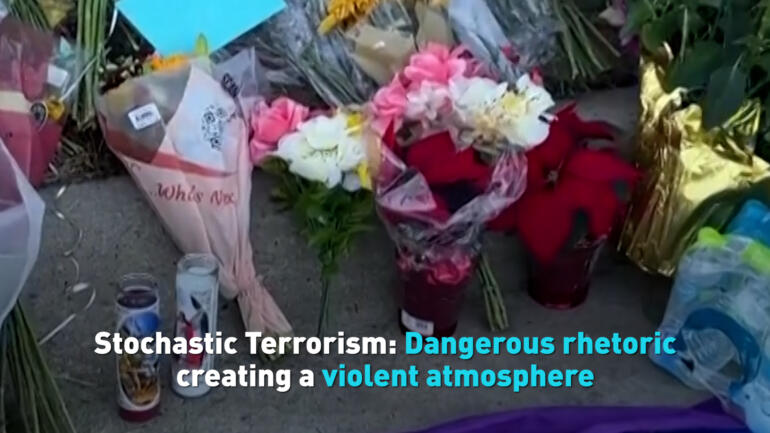In late March, federal authorities say a Neo-Nazi allegedly attempted to firebomb an Ohio church hosting a drag queen event.
The alleged attacker, 20-year-old Aimenn D. Penny, attended an anti-LGTBQ event near the church just weeks earlier, where he spewed rabid antisemitic and anti-gay rhetoric along with members of a white supremacist group White Lives Matter.
In November 2022, five people were killed and 17 were injured after a gunman opened fire inside the gay nightclub Club Q, in Colorado Springs, Colorado. The alleged shooter, Anderson Lee Aldrich, is being charged with over 300 criminal counts, including 48 hate crimes.
These attacks not only highlight the growing anti-LGTBQ+ violence and threats, but the hateful rhetoric that is fueling the attacks.
It’s a tactic known as “stochastic terrorism.”
What is Stochastic Terrorism?
Extremism and terrorism experts have been warning of the growing threat of “stochastic terrorism,” individuals who are inspired to violence by hate speech and public dehumanization seen either online or heard from public figures. Most worrying, these acts are much harder to predict by law enforcement.
This tactic is most seen online, with influencers and social media accounts fanning the flames of anti-LGTBQ hate could direct followers to attack people in the community.
“What that person running that account will do is focus a bunch of stories on drag queens with kids, and paint those in a light that is negative and unfavorable,” says Christopher Wiggins, Senior National Reporter for The Advocate.
“Eventually [the person running to account] knows that someone could potentially commit an act of violence.”
What makes the threat of stochastic terrorism more difficult to track is how news, whether legitimate or disinformation, could be incorporated into the tactics.
The New York Times has been slammed by contributors and journalists for its coverage of transgender, non-binary, and gender non-conforming people.
The non-profit group GLAAD (Gay & Lesbian Alliance Against Defamation) issued a letter claiming the Times has engaged in “irresponsible, biased coverage of transgender people.” The Times has disagreed with the criticism, however.
Mr. Wiggins points out that people using the tactic will use mainstream media or legislation as a justification for their actions.
“People who dabbling in this activity will use legislation, like the ‘Don’t Say Gay’ bill, and other political tools, to legitimize their negative acts, that then could turn potentially violent,” Wiggins says.
Any path to justice and safety?
Wiggins says from his reporting that federal law enforcement is monitoring the issue, but there doesn’t seem to be any active measures to combat it.
“Because of the First Amendment in the United States, there are certain limitations of what they can monitor,” Wiggins says.
But more advocacy organizations have been active in confronting the threat, Wiggins adds. He says that it’s also important for people to call out when these tactics are being used.
“Anytime there are right-wing extremists assembling somewhere or threatening some event or doing anything to raise their profile at the expense of the LGBTQ community, it needs to be pointed out,” he says.
 CGTN America
CGTN America

